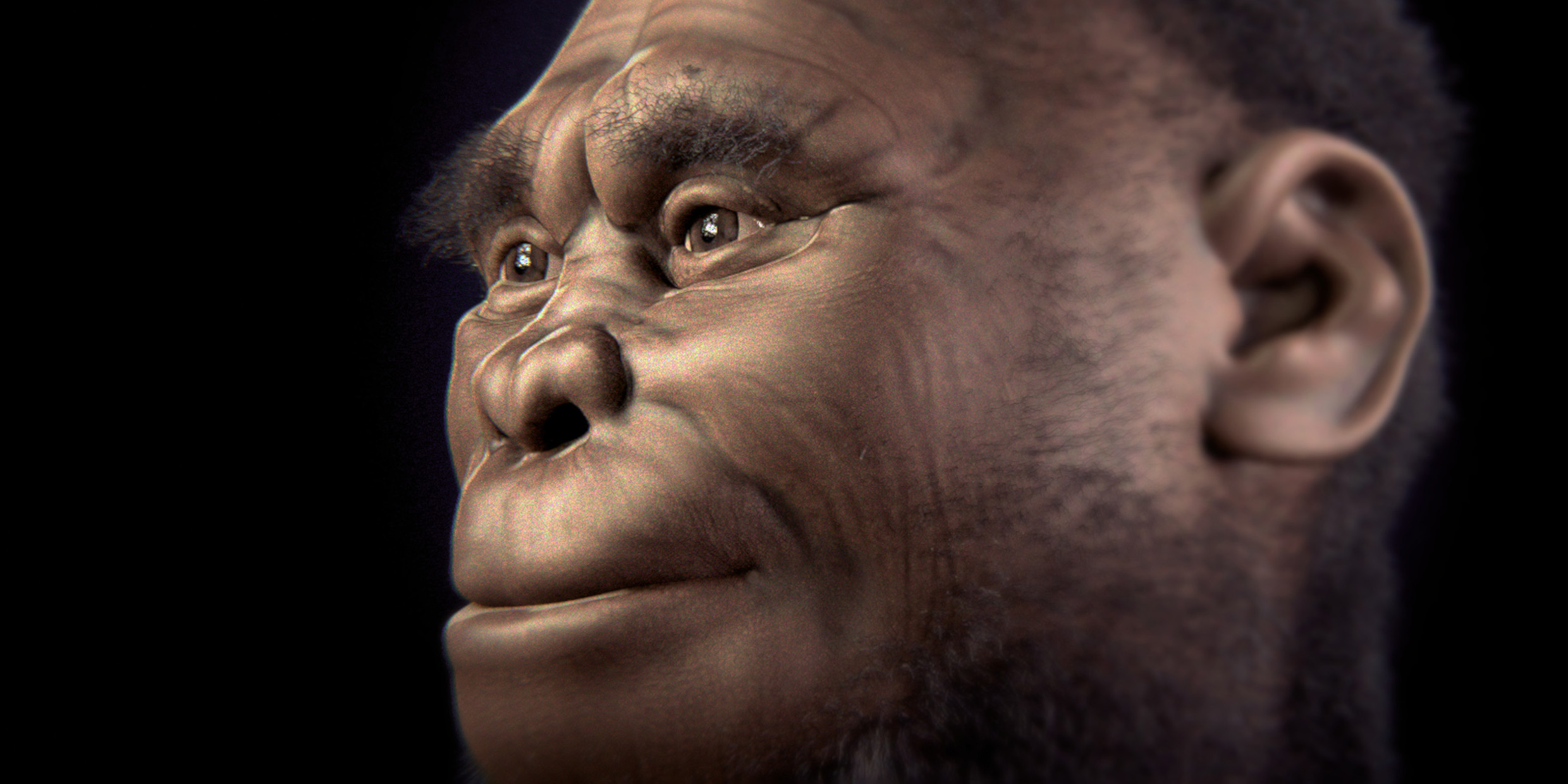Originally published 14 November 2004
About fifty years ago, a “stone age” tribe was discovered living in an isolated valley of Papua New Guinea. These people had virtually no contact with the outside world, no metal, no cooking vessels, no hearths. They lived pretty much as all humans had lived tens of thousands of years ago, before the discovery of metals and intensive agriculture.
Nevertheless, these aboriginal New Guineans are fully members of the species Homo sapiens. They have art, language, and complex cognitive and emotional lives. They can interbreed with the rest of us.
I dare say that today these people are watching satellite television and wearing New York Yankee tee shirts. For all I know one of their tribe is attending university at NYU.
Now imagine if the people discovered in that remote valley were not exactly human. Imagine instead a different species of humanlike creatures about one meter tall, with a brain the size of a chimpanzee’s. These little people walk erect. Their anatomy is more humanlike than chimplike. They fashion stone tools. And they are smart enough to have made their way by raft to New Guinea from the Asian mainland.
In short, these newly discovered creatures are part of the genus Homo, but a different species from ourselves. They are a second, non-interbreeding branch on the human family tree.
How would we treat these tiny, less brainy versions of ourselves? Would we put them in zoos, or extend them human rights? We would surely want to know if they have the powers of speech, abstract art, esthetic expression. Do they wonder at the starry night? Make ornaments for their bodies? Bury their dead?
Whatever the answers, discovery of a second living species of humans would be headline news around the world.
As it turns out, such a discovery might have been possible. As reported in a [2004] issue of Nature, anthropologists have found the skeleton (not yet fossilized) of just such a creature in a cave on the island of Flores in eastern Indonesia, a place never connected by land to Asia.
The bones, believed to be those of a female, are about 18,000 years old. Other scattered bones indicate that some of her species were alive even later, perhaps as the first urban civilizations were developing in the Middle East about 12,000 years ago. It is remotely possible that some remnant population of Homo floresiensis (as the species is called) lingers even today, on some isolated island of the Indonesian archipelago.
Homo floresiensis is not the first species of human known to overlap with our own. Neanderthals diverged from our common ancestral stock about half a million years ago and shared parts of the planet with us until they became extinct about 30,000 years ago. Homo floresiensis appears closely related to Homo erectus, which branched from our ancestral family tree about a million years ago.
How did Homo sapiens interact with this other species who for so long shared our space? Were we the cause of their extinction? Perhaps Homo floresiensis didn’t raft to Flores on their own; perhaps they were carried there as a sort of domesticated companion by our own kind of humans, which reached Australia 40,000 years ago.
One can be sure that anthropologists from around the world will now be rushing to the Indonesian islands to look for supporting evidence of this startling new discovery. One skeleton implies more, and the fact that the skeleton is so recent means that others might not be so difficult to find.
The new discoveries — and they will come — will fix our own species ever more firmly in the tree of life, and require us to rethink what it is that makes us special.
Is it the size of our brains that defines our unique humanity? Language? Toolmaking? Art? Or is it our capacity to embrace complexity, to be curious about our origins, to live in the future rather than the past.
The unfortunate Floresians, who lived so recently, may have been victims of our own animal violence. The anthropologist Margaret Mead once said that the progress of civilization is the ever widening circle of those whom we do not kill. Perhaps our most distinguishing characteristic as a species is that if we came upon a remnant tribe of Floresians today, we might protect them rather than destroy.



